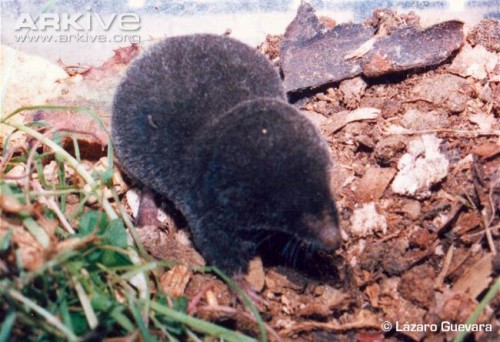Until recently this species was known only from the type locality on the western slope of the extinct San Martín Tuxtla volcano in Veracruz, Mexico. In 2004, 109 years after it was last seen, three of these tiny shrews were found near the type locality, in a patch of cloud forest on the south face of the volcano and just to the north west of the nearby Catemaco Lake. Nelson’s Small Eared Shrew (Cryptotis nelsoni) may occur in suitable habitats throughout the Sierra de Santa Martha. However, recent surveys in the region have not recorded its presence leading researchers to beleive it is endemic to the small area around the volcano. Classified as Critically Endangered (CR B1ab(i,iii)) on the IUCN Red List of Threatened Species.
How this species is doing
Pressure
The species occurs in an extremely small area which is completely surrounded by a high density of human settlements. Its habitat is gradually changing or disappearing as a result of logging, cattle grazing, induced fires and agriculture, which are occurring within the Los Tuxtlas Biosphere Reserve. Deforestation is as much as 90% in the area of the type locality, and the annual deforestation rate is 6.2%.
Responses
The entire range of this species falls within the Los Tuxtlas Biosphere Reserve and Los Tuxtlas Biological Station. Further research is urgently needed to determine the current distribution and population status of this species. A Species Conservation Strategy is needed to ensure steps are taken to protect and restore the species’ habitat. This should be developed alongside and agree with the management plan of the Biosphere Reserve.
Knowledge level
Knowledge levels Very little is known about the ecology of this species – it had remained undetected for so long that it was widely presumed extinct. In general, shrews have a high metabolic rate and consequently a voracious appetite. They must eat very frequently, and so are active throughout the day and night. Nelson’s small-eared shrew is believed to feed exclusively on insects. Occurs in evergreen tropical forest comprising large trees and areas covered by layers of volcanic sand and ashes.








